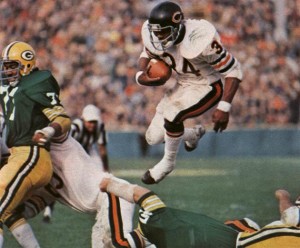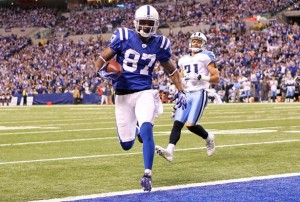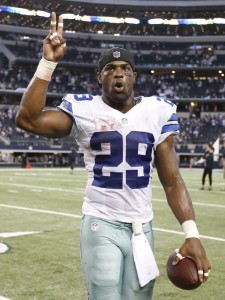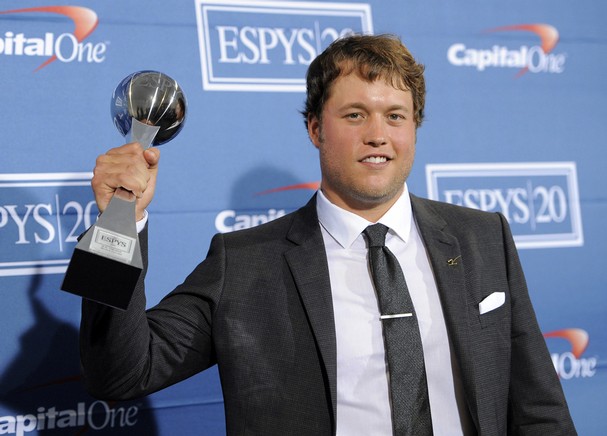Yesterday, I was a guest on the Wharton Moneyball show on SiriusXM Channel 111 (@BizRadio111), discussing the NFL draft. As always, it was a lot of fun, but the hosts threw me a curveball in the final seconds:
Which will produce the best quarterback from the 2015 Draft — the Jameis Winston/Marcus Mariota group, or the field?
Now I am quite familiar with the value of taking the field in these sort of bets. We are prone to being overconfident in our ability to predict things, especially when it comes to the NFL Draft. But I still said I’d take Winston/Mariota and leave you with everyone else, and be reasonably confident that I would end up with the draft’s best quarterback.
But am I right? How far down the quarterback slots do you have to go in the average draft to find the best QB? Would taking the top two generally be enough?
This is, of course, a question without a clear answer because there is no objective answer to the question “who was the best quarterback in the [__] Draft?” It’s much too early to grade the 2013 or 2014 drafts, and you will get no shortage of debate as to whether Andrew Luck or Russell Wilson is the best quarterback from the 2012 draft. In 2011, Cam Newton was the first overall pick, but Andy Dalton and Colin Kaepernick were the 5th and 6th quarterbacks taken.
In 2010, Sam Bradford does appear to have been the best quarterback from that draft, and should be remembered that way absent Colt McCoy, Tim Tebow, or Jimmy Clausen having a magical career turnaround.
In 2009, getting the top two quarterbacks would give you Matthew Stafford and Mark Sanchez, while the field would give you…. Josh Freeman and Curtis Painter.
In 2008, the top two quarterbacks were Matt Ryan and Joe Flacco. The book is not yet written on which one of them will be remembered as the best, but we can say that both will wind up being better than the field of Chad Henne, Matt Flynn, and Josh Johnson.
In 2007, the quarterback class was… ugly. The top guy will probably go down as one of Trent Edwards (most starts, most wins, most yards), Kevin Kolb (a positive TD/INT ratio!), or Drew Stanton (highest ANY/A but only 12 starts). Although for our purposes, we don’t need to finely split hairs. That’s because it’s clear the top quarterback was not JaMarcus Russell or Brady Quinn, the top two quarterbacks in that draft. Score one for the field.
Say what you want about Jay Cutler, but he was the clear top quarterback of 2006. In fact, he has thrown for more touchdowns than the rest of the class combined! As the 11th overall pick, he doesn’t quite meet the spirit of today’s question, but he is part of the field technically. That’s because Vince Young and Matt Leinart were the 3rd and 10th selections.
We need not spend much time on 2005. It was Aaron Rodgers, the second quarterback selected. Although Rodgers was much closer to the field (Jason Campbell was taken 25th overall, one pick after Rodgers) than being the first pick (Alex Smith).
For 2004, we can at least ignore the pretend Eli Manning/Philip Rivers debate, but that doesn’t help us when Ben Roethlisberger is in the mix, too. Call this one a push between top 2 and the field.
In 2003, it’s easy: it was Carson Palmer, the first overall pick. Nobody else comes close. Well, I guess that depends how you define class: Tony Romo went undrafted that year. Does the field include undrafted quarterbacks?
In 2002, not only is the answer David Garrard, but I think it’s Garrard by a wide margin. Garrard had a winning record, the most yards, the most TDs, and the best ANY/A out of the group with him, Patrick Ramsey, Josh McCown, and the first and third overall picks: David Carr and Joey Harrington. Score another one for the field.
In 2001, it’s Drew Brees, who was the second quarterback selected, albeit 31 picks after Michael Vick.
For 2000, let’s put that one down for the field.
1999 isn’t particularly close: Donovan McNabb made six Pro Bowls and started for 11 years; Daunte Culpepper is the runner up with three and five, respectively. And we know about 1998. So that’s two more for the top two. [continue reading…]





